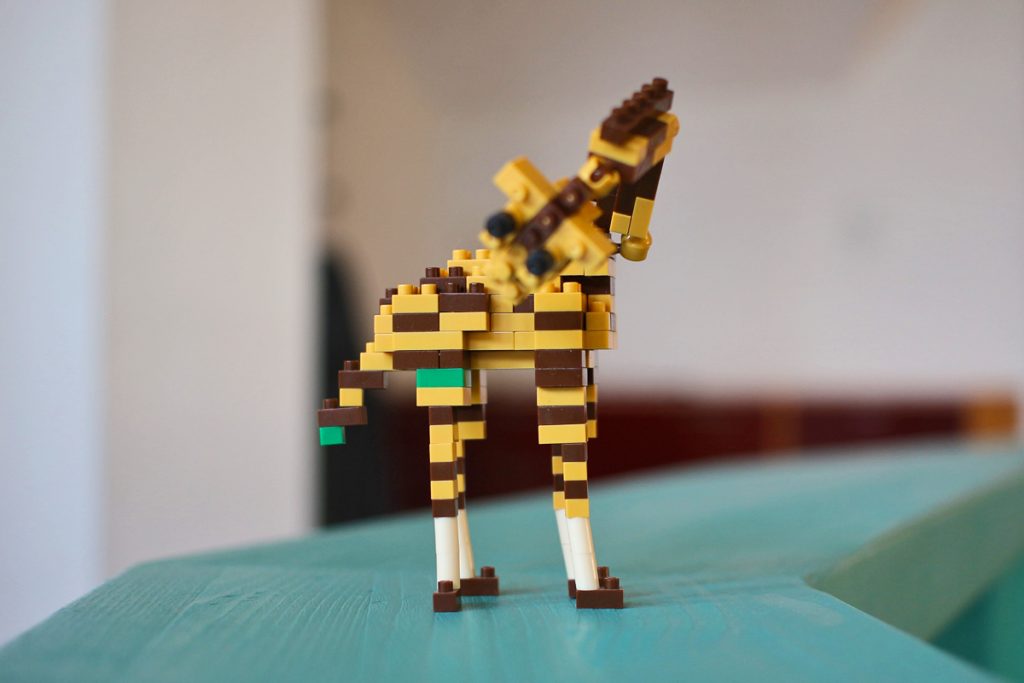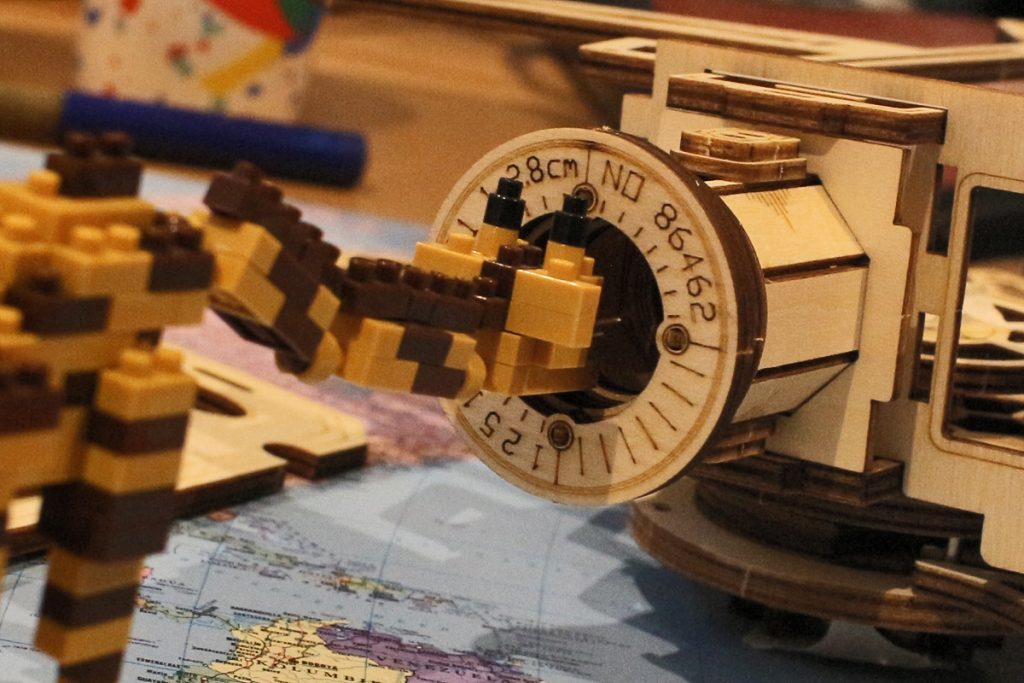
La photo: La maladie


Brushes and mallets are widely known as the objects which percussionists use in order to play on their instruments. Let’s consider a piano a percussion instrument. What can we do with a brush as pianists?
Obviously we might make use of it to scratch over the strings. Naturally playing on the instrument in such a way makes commonly more sense if we keep the right pedal down, but we should also take into consideration only scratching or striking the strings with the brush and leave the pedal in piece. I’ve tried out both ways while composing a new work for piano solo recently and, frankly, I was pretty disappointed. One might assume (I did!) that using a brush on the strings returns a somewhat spectacular and unusual sound, but it just didn’t. However, it’s quite nice to have the following effects: Gently tap over the treble strings and combine it with another playing technique inside the piano or some notes played on the keys. The resuly is quite silent and I would rather not use it in an orchestral work or in a piece for a large ensemble (needs to be amplified, considering the fact that such pieces are usually being staged in larger concert halls).
Another nice way to use it—and indeed this one is quite similar to the one described above—is to scratch over the section of the strings between the tuning screws and the bridge. Again this will produce only very fragile sounds. We might also consider to strike or scratch over the crossbeams with a brush. Again, the result is quite weak. Applying other mallets for that provides by far more options of creating and handling interesting thuds and noises.
Other possible playing techniques involving a brush which I haven’t tried out because they didn’t seem promising at all to me could be:

Christoph Renhart, piano
Five pieces combined to a cyclic work form the second book of my book of oracles in 21 parts for the piano. The five pieces are entitled “The WindsocK”, “The Royal Sail”, “The Cyclone”, “The Solar Wind” and “Egyptian Dark”. As it can be found out easily, the movements orbit the subject wind (the face assigned to the wind is ⚁) in all its facets. Moreover, the other subjects of the book of oracles appear as well: moonlight (⚀), water (⚂), soil (⚃), stars (⚄) and bells (⚅).
A small set of percussion instruments—four singing bowls and an accurately tuned (Saturn) gong—are added to the many instrumental colours of the piano and its sound spaces in this book. Apposite to the complex of themes, the instrumentation is deliberately echoing it in an faintly esoteric way. Musically observed, especially the gong acts as a spirit medium arbitrating between the well-tempered world of the piano and the microtonal macrocosm outwith the instrument.
The second book of my book of oracles was written in the summer and autumn of 2020.
Fünf zu einem zyklischen Werk zusammengefassente Stücke bilden das zweite Heft meines 21-teiligen Orakelbuchs für Klavier. Die fünf Stücke heißen „Der Windsack“, „Das Mondsegel“, „Der Zyklon“, „Der Sonnenwind“ und „Ägyptisches Dunkel“. Wie man unschwer erkennt, umkreisen die Sätze das Thema Wind (das dem Wind zugewiesene Würfelbild ist ⚁) in all seinen Facetten. Darüber hinaus erscheinen auch die anderen Themen des Orakelbuchs: Mondlicht (⚀), Wasser (⚂), Erde (⚃), Sterne (⚄) und Glocken (⚅).
Zu den vielen instrumentalen Farben des Klaviers und seiner Klangräume kommt in diesem Heft ein kleines Schlagwerk-Instrumentarium aus vier Klangschalen und einem exakt gestimmten (Saturn-)Gong hinzu. Passend zur Thematik ist der esoterisch anmutende Anklang durch die erweiterte Instrumentierung durchwegs beabsichtigt. Musikalisch betrachtet fungiert insbesondere der Gong hier als Medium, das zwischen der wohltemperierten Welt des Klaviers und dem mikrotonalen Makrokosmos außerhalb des Instruments vermittelt.
Das zweite Heft meines Orakelbuchs entstand im Sommer und im Herbst 2020.
INSTRUMENTATION:
piano
DURATION: 13 minutes
PUBLISHED BY:
Universal Edition
PREMIERE:
June 11, 2021 • Graz, KULTUM • Christoph Renhart, piano
PERFORMANCES:
December 7, 2021 • Leipzig, Grieg Gedenkstätte • Gregor Forbes, piano
«Marley was dead: to begin with.» Thus Charles Dickens begins one of his most famous narratives, the name of which literally means ‹a Christmas song›. Dead, or let‘s better call it well-worn, copybook and totally hackneyed by being cinematized a little bit too often, is basically everything today, which comes close to brushing against this advent faerie tale that has been pancaked so very often in order to fit into any TV show where Bill Murray might appear. Why, this being the case, starting here?
Christmas comes back every year, come hell or high water. As dead as old Marley may appear—that is to say «dead as a door-nail»—as vitally he is still haunting ubiquitously as a ghost. The world has been most ardous ever since and of all things it‘s Christmas when we expect even the grumpiest fellows to come in with apparent brouhaha of felicity. In the middle of the mess the big guns are hauled out: bell-roars, glistening candlelight-beflickered straw stars and an e‘en celestial haze of pathos and liquorice. All humbug!
In my music one can hear all the ingredients of the humbug merged in such a way that a dramaturgical course arises out of it. This pathway runs along selected passages from Dickens‘s novel. The narrator eventually turns into the ghost of his own figure.
«Marley‘s Ghost» was composed in 2017 for the baritone Georg Klimbacher and the pianist Andreas Fröschl, who premiered the piece in the same year at Vienna‘s Arnold Schoenberg Center. I wrote the version for baritone and ensemble in the spring of 2020. The orchestration means a recreation in many regards: A differentiation in layers of tonal colours led to new harmonic illuminations or to compositional proliferations. A major challenge was the translation of those shades into an orchestral language which had already been delineated by the use of inside-the-piano techniques. The realisation of the extended version of «Dickens‘s humbug» was essentially inspired by Morgana Petrik, whom this version is cordially dedicated.
»Marley was dead: to begin with.« So beginnt Charles Dickens eine seiner bekanntesten Erzählungen, die wörtlich betrachtet eigentlich ›ein Weihnachtslied‹ bedeutet. Tot, oder sagen wir besser: abgedroschen, abgeschrieben und vom vielen Verfilmen völlig ausgeleiert, ist heute im Grunde alles, was auch immer dieses bis hin zu einer fernsehvertauglichten Bill Murray-Auskitschung plattgewalzerte Adventmärchen auch nur anzustreifen drohte. Warum also hier beginnen?
Weihnachten kommt alle Jahre wieder, komme was wolle. So tot der alte Marley auch scheint — nämlich »dead as a door-nail« — so lebendig spukt er immer noch als allgegenwärtiger Geist herum. Die Welt war immer schon die Mühsamste und ausgerechnet zu Weihnachten erwartet man selbst von den grantelndsten Menschen einen Mindesthang zu überschwänglichem Glücksgetue. Dazu werden schwere Geschütze aufgefahren: Glockengebrüll, funkelndes, kerzenlichtumflattertes Strohgestirn und ein gar himmlischer Nebel aus Pathos und Lakritze. Alles Humbug! In meiner Musik hört man all die Zutaten des Humbugs so miteinander vermengt, dass sich daraus eine eigene Dramaturgie entspinnt. Diese verläuft entlang ausgewählter Textstellen aus Dickens‘ Roman. Der Erzähler verfällt dabei immer mehr seiner eigenen Geschichte und verwandelt sich am Ende selbst in den Geist seiner eigenen Figur.
»Marley’s Ghost« entstand 2017 für den Bariton Georg Klimbacher und den Pianisten Andreas Fröschl, die die Musik im selben Jahr im Arnold Schönberg Center in Wien zur Uraufführung brachten. Die Fassung für Bariton und Ensemble schrieb ich Anfang 2020. Die Orchestrierung bedeutet dabei zugleich eine Neugestaltung in vielerlei Hinsicht: Eine Ausdifferenzierung in klangfarblichen Schichten führte an vielen Stellen zu einer harmonischen Neuausleuchtung oder zu satztechnischen Wucherungen. Eine besondere Herausforderung stellte die Übersetzung jener Schattierungen in eine orchestrale Sprache dar, die durch eine erweiterte Spieltechnik im Klavier quasi bereits vorskizziert war. Die Realisierung dieser erweiterten Version »Dickens’schen Humbugs« wurde maßgeblich von Morgana Petrik angeregt, der die neue Fassung herzlich gewidmet ist.
INSTRUMENTATION:
flute, clarinet in Bb, soprano saxophone (also baritone saxophone), horn, tenor trombone, percussion (1 player), piano, violin, viola, violoncello, double bass
PERCUSSION INSTRUMENTS:
vibraphone, glockenspiel, tubular bells, bass drum, timpani, large suspended cymbal, maracas
DURATION:
12’30 minutes
PUBLISHED BY:
Universal Edition
RECORDING:
March 22, 2021 • Wien, Ehrbar-Saal • Ensemble Zeitfluss • Edo Micic, conductor • Georg Klimbacher, baritone